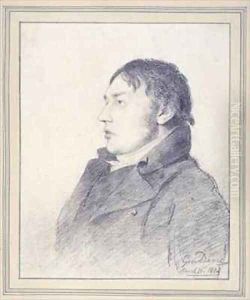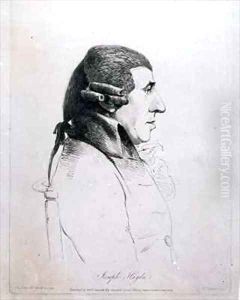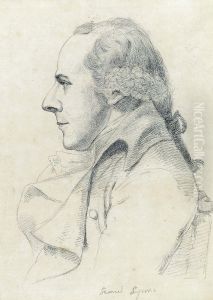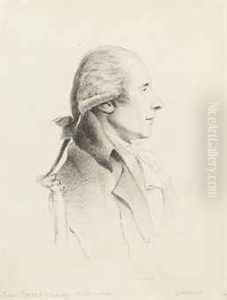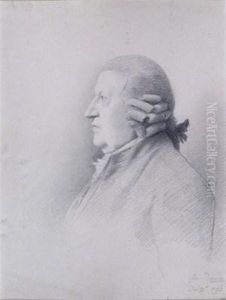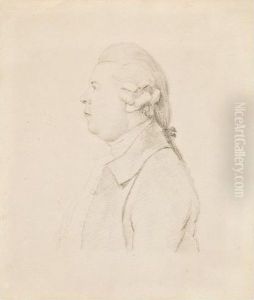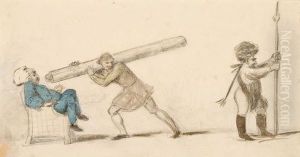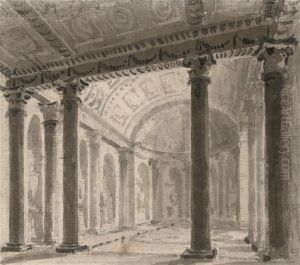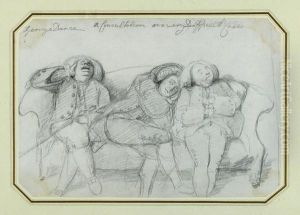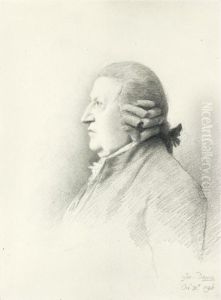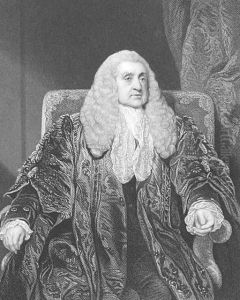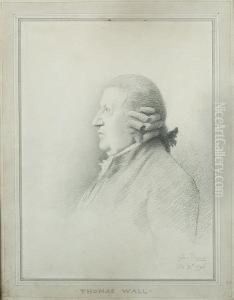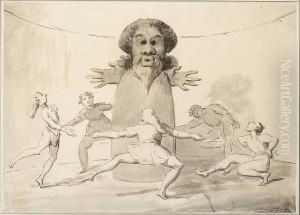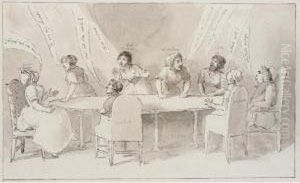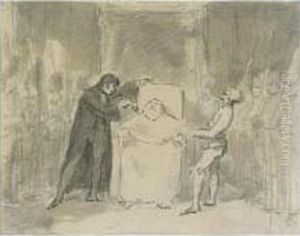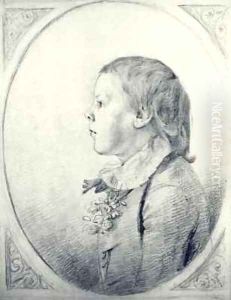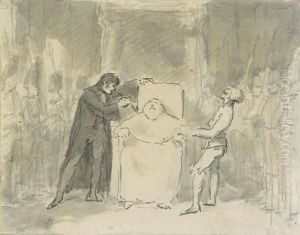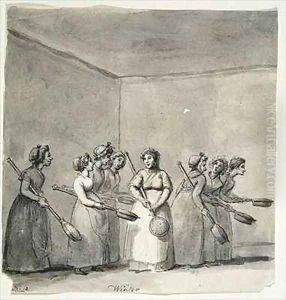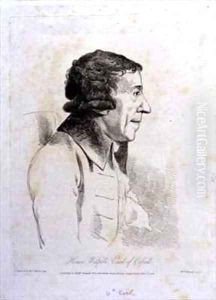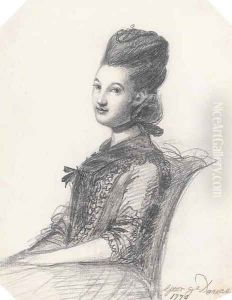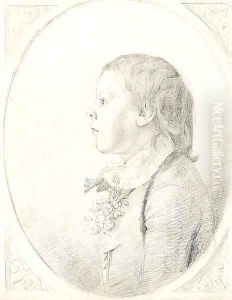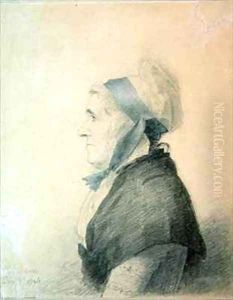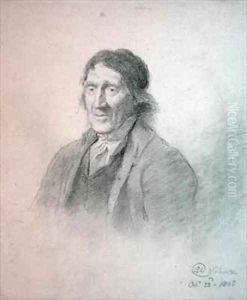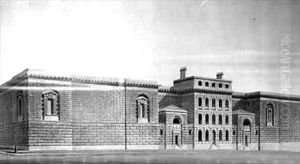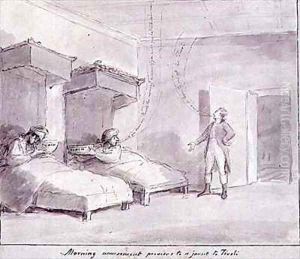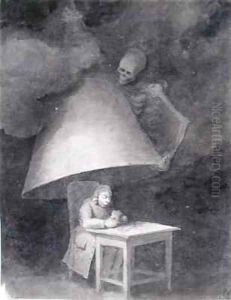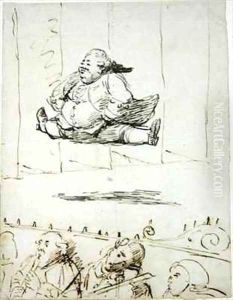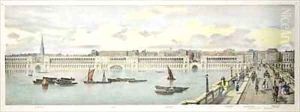George Dance Paintings
George Dance the Younger was a distinguished English architect, portraitist, and draughtsman of the 18th and early 19th centuries. Born on 1 April 1741 in London, he was the fifth and youngest son of George Dance the Elder, also a celebrated architect and the city surveyor of London. Dance the Younger followed in his father's footsteps and showed an early aptitude for architecture.
After his father's death in 1768, George Dance the Younger succeeded him as the Clerk of the City Works in London, a position that allowed him to have a significant influence on the architecture of the city. During his tenure, he designed several important buildings in the neoclassical style, which was coming into vogue at the time, replacing the earlier Palladian style. Notable among his works is the Royal College of Surgeons in London and the Newgate Prison, which was acclaimed for its innovative plan and humane approach to prison design.
Dance was also known for his association with the Royal Academy of Arts, where he was a founding member. He contributed to the Academy not only as an architect but also as a talented portrait artist. His portraits often depicted prominent figures of his time, and he is remembered for his artistic versatility.
Beyond his architectural and artistic contributions, Dance played a pivotal role in the intellectual and cultural society of London. He was a friend and contemporary of other leading figures of the day, including the artist William Blake and the philosopher Jeremy Bentham. His circle of friends and acquaintances was a reflection of his prominent status in London's cultural life.
He remained a bachelor throughout his life and dedicated himself to his profession. Dance was a prolific architect, with a career that spanned several decades and left a lasting impact on London's architectural landscape. He was admired for his innovative designs, which often incorporated elements of the picturesque and the sublime, two aesthetic concepts that were highly valued at the time.
George Dance the Younger died on 14 January 1825 in London. His legacy lives on through his architectural works, many of which still stand today, and his drawings, which provide valuable insights into the artistic and architectural practices of his era.
